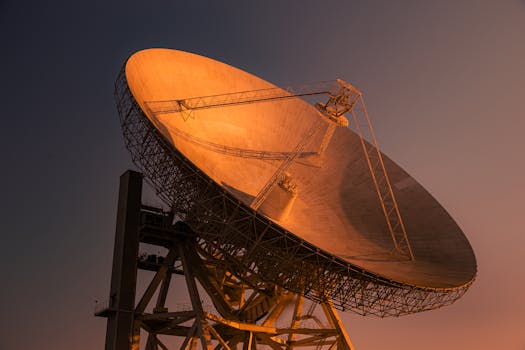GEO Satellites: Understanding the Technology and Applications

GEO satellites, or Geostationary Earth Orbit satellites, are a type of satellite that orbits the Earth at an altitude of approximately 36,000 kilometers. GEO satellites are placed in a fixed position above the equator, where they can maintain a constant view of a specific region of the Earth’s surface. This allows them to provide a wide range of services, including telecommunications, weather forecasting, and navigation.
The technology behind GEO satellites is complex and involves a number of different components. The satellite itself is typically equipped with a range of instruments, including transponders, antennas, and solar panels. The transponders are used to receive and re-transmit signals, while the antennas are used to transmit and receive data. The solar panels provide power to the satellite, allowing it to operate for extended periods of time.
One of the main applications of GEO satellites is in the field of telecommunications. They are used to provide a range of services, including television broadcasting, internet connectivity, and telephone communications. GEO satellites are particularly useful for providing coverage to remote or underserved areas, where traditional telecommunications infrastructure may not be available.
In addition to telecommunications, GEO satellites are also used for a range of other applications. They are used to monitor weather patterns and provide early warnings of severe weather events. They are also used for navigation, providing location information and timing signals to GPS receivers on the ground.
The use of GEO satellites has a number of benefits, including the ability to provide coverage to remote or underserved areas, and the ability to provide a wide range of services from a single platform. However, there are also some challenges associated with the use of GEO satellites, including the high cost of launching and operating the satellites, and the limited availability of spectrum.
Despite these challenges, the use of GEO satellites is expected to continue to grow in the coming years. New technologies, such as high-throughput satellites and advanced propulsion systems, are being developed to improve the efficiency and effectiveness of GEO satellites. Additionally, the increasing demand for telecommunications services in remote and underserved areas is driving the growth of the GEO satellite market.
In conclusion, GEO satellites are a crucial part of modern telecommunications, providing a wide range of services and applications. The technology behind GEO satellites is complex, but the benefits of using them are clear. As the demand for telecommunications services continues to grow, the use of GEO satellites is expected to play an increasingly important role in meeting this demand.
GEO satellites have been used for a variety of purposes, including military communications, navigation, and weather forecasting. They have also been used for commercial purposes, such as providing internet connectivity and television broadcasting. The use of GEO satellites has revolutionized the way we communicate and access information, and has had a significant impact on the telecommunications industry.
The future of GEO satellites looks bright, with new technologies and innovations being developed to improve their efficiency and effectiveness. One of the most significant advancements in GEO satellite technology is the development of high-throughput satellites. These satellites are designed to provide high-speed internet connectivity to remote and underserved areas, and have the potential to revolutionize the way we access information and communicate.
In addition to high-throughput satellites, other advancements are being made in GEO satellite technology. For example, advanced propulsion systems are being developed to improve the efficiency and effectiveness of GEO satellites. These systems allow satellites to maintain their position and altitude, reducing the need for costly and complex station-keeping maneuvers.
Another area of research and development in GEO satellite technology is the use of advanced materials and manufacturing techniques. New materials and manufacturing techniques are being developed to improve the strength and durability of satellites, reducing the risk of failure and increasing their lifespan.
Overall, the use of GEO satellites is expected to continue to play a major role in the telecommunications industry, providing a wide range of services and applications to remote and underserved areas. As new technologies and innovations are developed, the efficiency and effectiveness of GEO satellites will continue to improve, providing even more benefits to users around the world.



